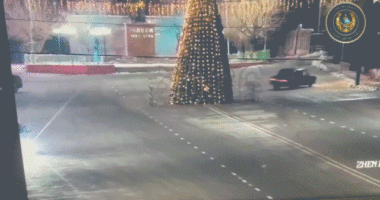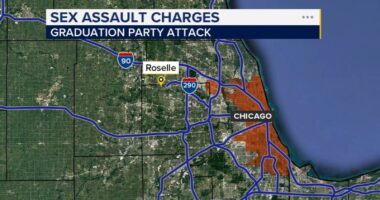Share this @internewscast.com
In recent developments, Belgium’s defense minister has raised alarms over a potential espionage operation involving a series of unidentified drones spotted above a military base suspected to house U.S. nuclear weapons. The incident has sparked serious concerns regarding national security.
Theo Francken, the defense minister, took to social media to inform the public that these drones were detected over the Kleine-Brogel Air Base in northern Belgium during the weekend. His comments have highlighted the urgency and seriousness of the situation.
“Efforts were made to intercept these drones using a drone jammer, but unfortunately, these efforts were not successful,” Francken explained. “A helicopter and police vehicles engaged in a pursuit, but the drones managed to evade capture after a few kilometers.” This statement underscores the challenges faced by authorities in dealing with such advanced technology.
The defense minister expressed gratitude to the base’s guards and police for their vigilance and quick response, stating, “Thanks to the guard for their attention and follow-up. Thanks to the police services. We continue to strengthen our vigilance in order to apprehend the pilots.” His comments reflect an ongoing commitment to enhancing security measures.

During an official F-35 opening ceremony at Florennes Air Base, Theo Francken addressed the media, emphasizing the gravity of the situation. The minister told RTBF, Belgium’s French-language public broadcaster, that the drone sightings are both “very concerning” and “worrying,” reiterating the need for heightened security and alertness.
Francken told RTBF, Belgium’s French-language public broadcaster, the situation was “very concerning” and “worrying.”
The defense minister added that the incidents were under investigation but suggested they could have been part of a spying operation.
“They [the drones] come to spy, to see where the F-16s are, where the munitions are, and other highly strategic items,” Francken told RTBF. “It’s not a drone that just happened to cross the military base. It was there for a long time, so it was definitely for spying.”
Kleine-Brogel is integral to NATO’s nuclear deterrence posture in Europe and houses F-16 fighter jets, according to its website. The air base said on its website that the jets will be replaced in a few years by the F-35A, the U.S. Air Force’s latest fifth-generation fighter.
Nuclear watchdogs have reported the base as home to U.S. nuclear bombs under NATO weapons sharing agreements.

A Belgian F-16 jet takes part in NATO’s “Steadfast Noon” nuclear deterrence drill at Kleine-Brogel Air Base in Belgium on October 18, 2022. (Kenzo Tribouillard/AFP via Getty Images)
In a series of airspace incursions in September, Russian drones entered Poland and three MiG-31 fighter jets crossed into Estonia, prompting NATO aircraft to intercept and escort them out.
Belgium’s defense minister said he couldn’t confirm Russia was behind the drones over Kleine-Brogel but noted the Kremlin’s motives were clear and accused Moscow of waging a “hybrid war” across Europe.
President Donald Trump told reporters in September on the sidelines of the United Nations General Assembly that NATO countries should shoot down Russian aircraft that violate their airspace.

A “No Drone Zone” sign is displayed in central Moscow on January 11, 2024, prohibiting the use of unmanned aerial vehicles in the area. (Natalia Kolesnikova/AFP via Getty Images)
NATO Secretary General Mark Rutte also warned Moscow after a series of drone incursions that the 32-member alliance is prepared to defend every inch of NATO territory.
“We are a defensive Alliance, yes, but we are not naive, so we see what is happening and whether it is intentional or not – if it is not intentional, then it is blatantly incompetence,” he said. “And of course, even if it is incompetence, we still have to defend ourselves.”
















